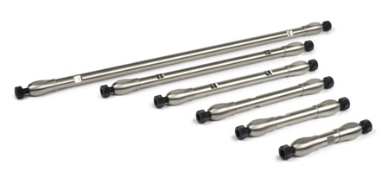In this month’s technical tip we will look at what is meant by column conditioning and/or activation.
All Phenomenex HPLC columns are QC tested prior to shipping, after which the shipping solvent is generally the same as the testing solvent unless specified on the CQA document that ships with the column. “Column conditioning” or “activation” are terms which are often used interchangeably. Simply put, they are the steps taken to switch a column from its shipping solvent to the solvent system used in a specific analytical method.
When considering what conditioning is required, attention should be paid to:
The following questions should be considered:

When working with reversed phase columns, which are generally shipped in 65:35 acetonitrile:water, and are generally used with mixtures of either methanol or acetonitrile with water or a buffer, it is often possible to move directly to the planned mobile phase. If buffer concentrations are higher than 20 mM, then it may be necessary to first switch to the new organic/water ratio before introducing the buffer to reduce any risk of salt precipitation.
A small number of stationary phases (cyano, amino, diol) can be used in normal phase or reversed phase. They are generally shipped in normal phase mixtures, and if they are to be used in reversed phase then switching through a universally miscible solvent is required, for which a protocol such as the following can be used:
In this process the THF or IPA is first used to remove the hexane from the column. This is important, as hexane will not mix with methanol or water. Methanol will then replace the THF or IPA in the column before the mobile phase is introduced. When choosing between THF and IPA, consideration should be given to the HPLC system. If the system tubing, or fittings are made from PEEK then THF cannot be used and therefore IPA is preferred. If the system is plumbed with stainless steel then THF or IPA can be used, and THF has the advantage of having a lower viscosity.
When conditioning a column for use in a gradient system, flushing the column with the strong solvent (generally solvent B) prior to equilibrating the column at the starting point of the gradient is good practise. It will help to ensure that the column will give a good baseline when the gradient is run. It is also a good idea to run two or three blank gradients before injecting a test standard.
The question often arises, “how do I know that my column is fully conditioned?” There are two useful ways to view this.